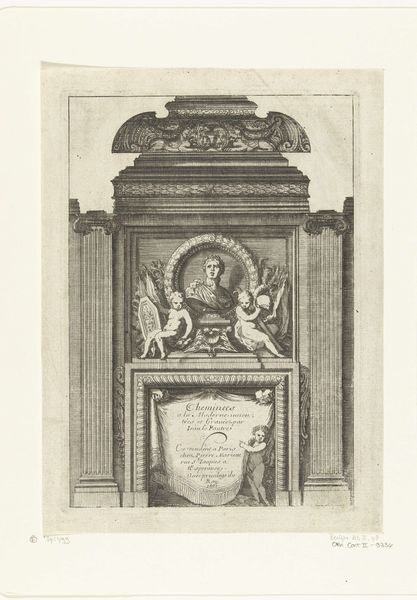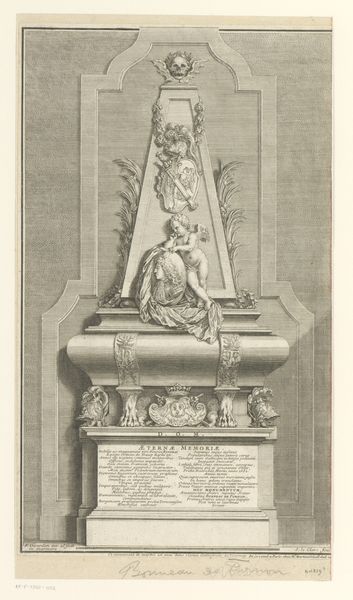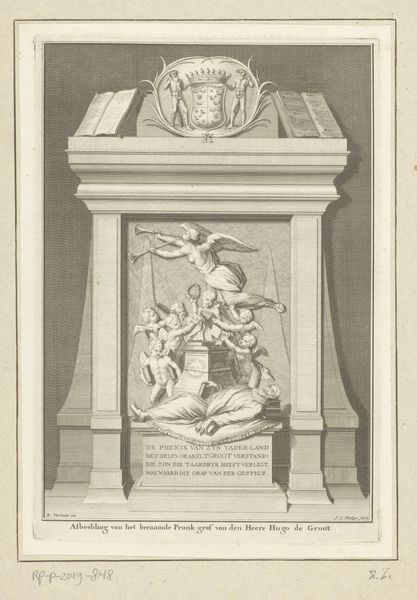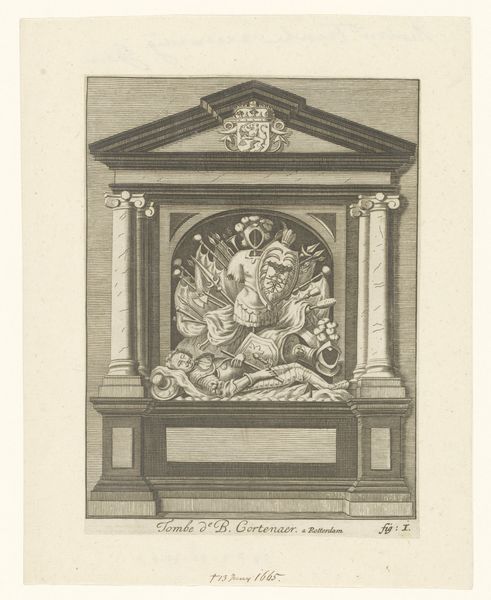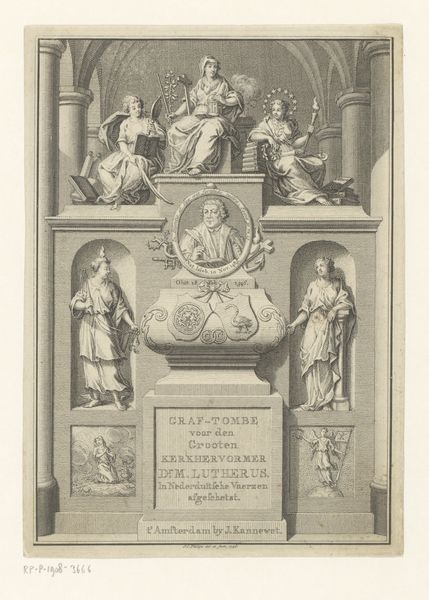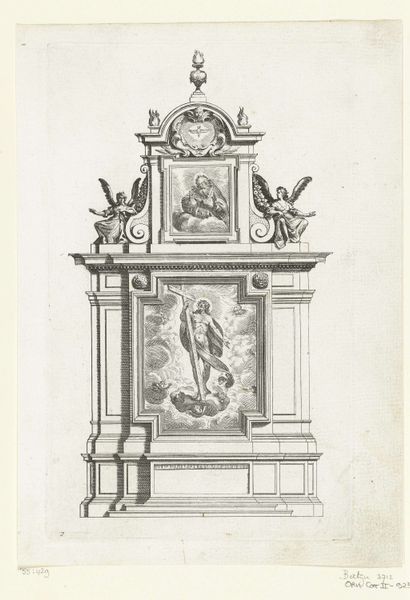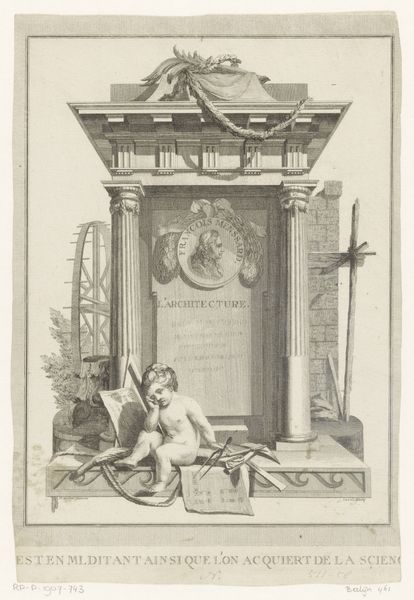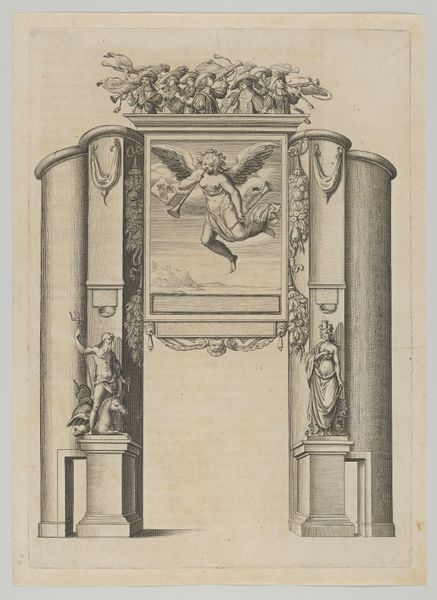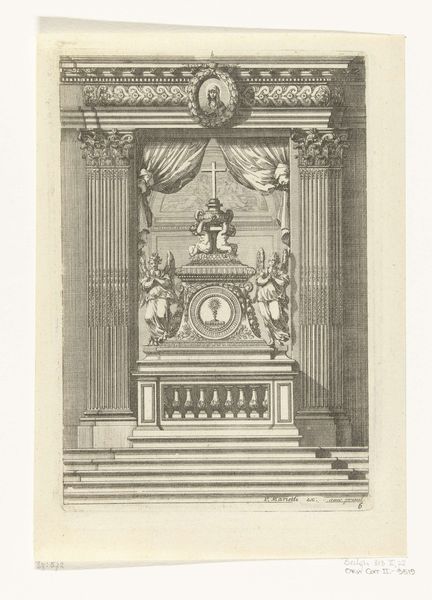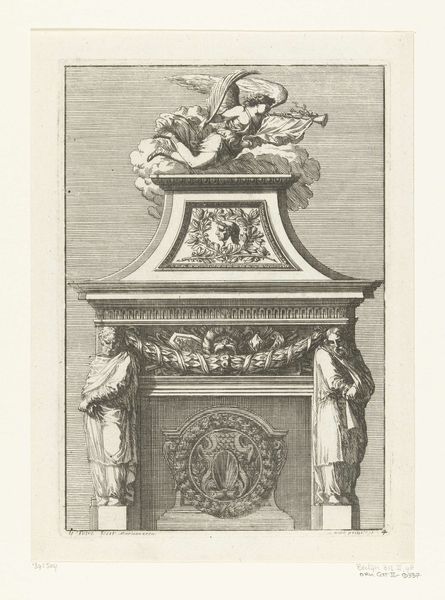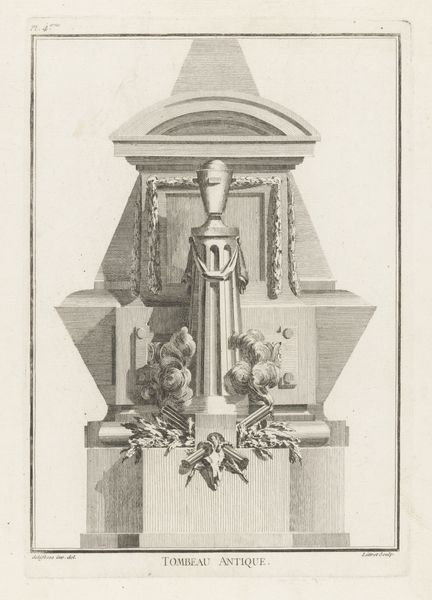
print, engraving
#
portrait
#
neoclacissism
# print
#
history-painting
#
engraving
Dimensions: height 210 mm, width 125 mm
Copyright: Rijks Museum: Open Domain
Curator: At first glance, this print feels so...stark. Is it an illustration of a monument? The detail feels precise but also a bit cold. Editor: It does, doesn't it? Its cool tones lend it a certain gravitas, wouldn’t you say? Actually, it is a depiction of a monument. What we are seeing here is David Moens's "Grave of Egbert Bartolomeusz Kortenaer", dating from around 1830 to 1832. Kortenaer was a 17th-century Dutch admiral. Curator: The symbols, then, would be steeped in patriotic significance, representing military might and the Dutch state. Tell me, who exactly was the patron that this grave represents and who created it, materially and metaphorically? Editor: Ah, a complex question! In terms of material production, this is an engraving, so we're dealing with the techniques of line-making, acid etching, the skilled labor required to transfer the image onto the plate… The layers of workmanship involved are deeply connected to craft. As to why someone might have sought out Moens, particularly in this neoclassical style? Hard to say precisely, but in 19th-century, remembering and mythologizing historical figures like Kortenaer spoke directly to then-current nationalism, right? It created cultural touchstones. Curator: Precisely. And that symbolism would extend beyond just military imagery, wouldn’t it? I wonder what stories, which moral qualities they're intending to instill in the viewer. I imagine these visual emblems operated almost like shorthand at that time. For instance, note the broken flags or the lion under Kortenaer in the centre: what cultural baggage, emotional context, that imagery possessed then, and what lingers with us now. The very choice of Neoclassicism is telling. It is not just the history-painting style; its invocation also presents its own symbol – clarity and order rooted in the age of empires… Editor: Absolutely. And what it suggests for contemporary eyes about the process and resources involved—the commissioning, the drafting, the skilled printing itself. These were tools used in building and maintaining ideas of nationhood. Thank you; it always teaches to see an artwork in another viewpoint. Curator: And thank you! Looking closer helps us glimpse those layers of meaning and the weight that visuals can bear over time.
Comments
No comments
Be the first to comment and join the conversation on the ultimate creative platform.
